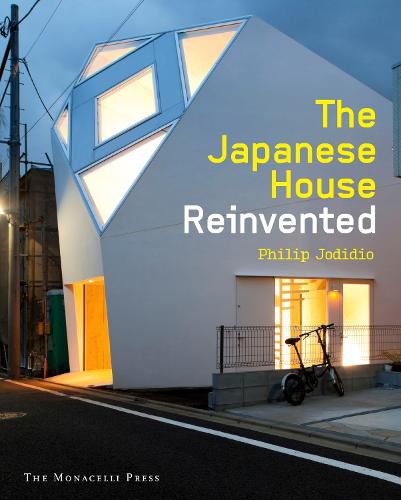Readings Newsletter
Become a Readings Member to make your shopping experience even easier.
Sign in or sign up for free!
You’re not far away from qualifying for FREE standard shipping within Australia
You’ve qualified for FREE standard shipping within Australia
The cart is loading…






Japanese houses today have to contend with unique factors that condition their design, from tiny lots in crowded urban contexts to ever-present seismic threats. But their formal innovation and attention to materials, technology, and measures to coax in light and air while maintaining domestic privacy make them cutting-edge residences that suggest new ways of being at home. In these 50 residences in the most dense urban milieu Japan’s 127 million people live in an area slightly smaller than California architects explore alternating ideas of stability and ephemerality in various ways, resulting in spaces that are as fascinating as they are idiosyncratic. It is no surprise that Japan is where this progressive residential design activity is concentrated today. If international awards such as the coveted Pritzker Prize are any indication, contemporary Japanese architecture has emerged as a substantial force on the international scene ever since Kenzo Tange won it in 1987. Since then, Japanese winners of the Pritzker are Fumihiko Maki (1993), Tadao Ando (1995), Kazuyo Sejima and Ryue Nishizawa SANAA (2010), Toyo Ito (2013) and Shigeru Ban (2014) most of whom are still actively building
$9.00 standard shipping within Australia
FREE standard shipping within Australia for orders over $100.00
Express & International shipping calculated at checkout
Japanese houses today have to contend with unique factors that condition their design, from tiny lots in crowded urban contexts to ever-present seismic threats. But their formal innovation and attention to materials, technology, and measures to coax in light and air while maintaining domestic privacy make them cutting-edge residences that suggest new ways of being at home. In these 50 residences in the most dense urban milieu Japan’s 127 million people live in an area slightly smaller than California architects explore alternating ideas of stability and ephemerality in various ways, resulting in spaces that are as fascinating as they are idiosyncratic. It is no surprise that Japan is where this progressive residential design activity is concentrated today. If international awards such as the coveted Pritzker Prize are any indication, contemporary Japanese architecture has emerged as a substantial force on the international scene ever since Kenzo Tange won it in 1987. Since then, Japanese winners of the Pritzker are Fumihiko Maki (1993), Tadao Ando (1995), Kazuyo Sejima and Ryue Nishizawa SANAA (2010), Toyo Ito (2013) and Shigeru Ban (2014) most of whom are still actively building